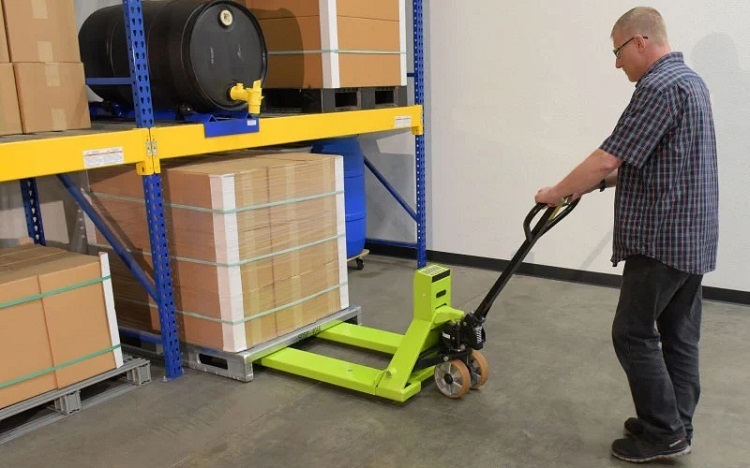In the fast-paced world of logistics, warehousing, retail, and manufacturing, a reliable hand pallet jack is an indispensable tool. While it may seem like a simple piece of equipment, choosing the right pallet jack can make a significant difference in the safety, productivity, and efficiency of your operations.
With numerous models and features on the market, it’s essential to understand what to look for when selecting the right pallet jack for your business. Here’s a comprehensive guide to help you make an informed decision.
Table of Contents
Assess Your Load Requirements
The first and most critical factor to consider is the weight capacity you require. Standard hand pallet jacks typically carry loads between 2,000 to 5,500 kilograms. Calculate the average and maximum load weights in your business to avoid overloading the jack, which can cause equipment failure or accidents.
Also, take note of the size and type of pallets you’ll be handling. Some pallet jacks are designed for standard Australian pallets, while others cater to European or custom-sized pallets. Measure the width, length, and fork dimensions required to ensure a snug and stable fit.
Consider the Type of Floor Surface
The condition of your floors significantly affects the type of wheels and materials you should choose for your pallet jack.
- Smooth concrete floors: Polyurethane or nylon wheels are ideal because they roll easily and offer durability.
- Uneven or rough surfaces: Rubber wheels or larger diameter wheels can absorb shocks and provide better grip.
- Cold storage or wet environments: Look for corrosion-resistant materials like stainless steel and waterproof bearings.
Choosing the right wheels will enhance maneuverability, reduce noise, and prolong the life of the equipment.
Evaluate Manoeuvrability and Ergonomics
A good pallet jack should be easy to maneuver, even in tight spaces. Consider:
- Turning radius: If you have narrow aisles, a compact design with a tight turning radius is essential.
- Handle design: Look for ergonomic handles with a comfortable grip and three-position controls (lift, lower, neutral) to reduce operator fatigue.
- Pump action: Smooth and efficient hydraulic pumps reduce the effort needed to lift loads.
An ergonomic and user-friendly design not only increases productivity but also reduces the risk of workplace injuries.
Decide Between Manual and Electric Options
Although this guide focuses on hand pallet jacks, you should also weigh the benefits of semi-electric or electric pallet jacks if you handle heavy loads frequently or have large warehouses. Electric models reduce the strain on workers and speed up operations, though they come at a higher price point.
For businesses with smaller spaces and lighter loads, manual pallet jacks are typically sufficient and more cost-effective.
Look at Maintenance and Durability
Not all pallet jacks are created equal. Examine the build quality, including the materials used for the frame, forks, and hydraulic pump. Opt for well-known brands with a reputation for durability, as this will save money on repairs and replacements over time.
Additionally, check the availability of spare parts and whether the supplier offers maintenance support or warranties. Regularly maintained equipment performs better and lasts longer.
Factor in Your Budget
While it’s tempting to go for the cheapest option, remember that investing in a high-quality pallet jack can lead to long-term savings through improved performance, safety, and reduced downtime.
Assess your budget and aim for the best balance between price, features, and reliability. Consider the total cost of ownership, not just the purchase price.
Check Supplier Reputation and Support
Finally, choose a reputable supplier who offers good customer service, warranties, and after-sales support. A knowledgeable supplier can help you select the right model, provide product training, and assist with any technical issues down the line.
Final Thoughts
Selecting the right hand pallet jack for your business is more than just a matter of picking a model off the shelf. By considering factors such as load capacity, floor type, ergonomics, maintenance needs, and budget, you can ensure you’re investing in equipment that improves efficiency, enhances safety, and meets the specific demands of your operation.
Taking the time to choose wisely will pay off in the form of smoother operations, happier employees, and better bottom-line results.

